Herb Sundays 142: Trance Part Two (Disc Two: Mitsubishi Xpanded)
If you believe in Utopia you also deal in Oblivion. The Trance era ends/begins now. Plus... BPM as economic indicator, Boom Boom Time, & Malibu, Merely, and Muggs.
Herb Sundays 142: Trance Part Two (Disc Two: Mitsubishi Xpanded) (Apple, Spotify)
Art by Michael Cina.
“And what an apocalyptic vision it was. Jumbo jets were going to fall out of the sky.
People believed this: in 1998 a Gallup survey for the Daily Telegraph revealed that two-thirds of the British population believed planes would be affected. Nuclear missiles might launch themselves. In 1999 America and Russia agreed on a jointly manned early warning station in case the bug accidently prompted a nuclear attack. Police forces across Britain cancelled leave over the millennium period because of concern over failing alarm systems and blackouts. Scotland Yard sent an officer to Sydney to providean early warning system. The Boston mass transit system planned a shutdown.
Bristol rapper Tricky had certainly pre-empted the mood when he named his doom-laden 1996 album Pre-Millennium Tension. And what was clubland going to do? Blast into the new century with the biggest parties ever. If anyone knew how to celebrate, it was the superclubs. And they were going to party like – well, like it was 1999.”
-Dom Phillips- Superstar DJs Here We Go!: The Rise and Fall of the Superstar DJ
Following last week’s “disc one” in the style of the double CD mix compilations of the Trance era…
We continue and close my exploration of the Trance/Progressive House zenith of the Y2K era, its impending crash, and the tendrils of its renewal. I emerge like a coal miner covered in fluoro ash, weakened but renewed by my findings. Thanks to
, , and a lot of you for the shoutouts, many in private, but that’s just how dirty this T-work gets.This week’s playlist turns the heat up with chuggers, belters, and bangers, with a special thanks to Cina for some ‘90s Dallas-era inputs. While realizing this music is bliss, it also portends something much darker about where culture is headed. As scene hero Evian Christ knows: “My instinct is always flying at the speed of sound into the sun sort of thing. It's not castles in the sky. It's beyond that, it's the apocalypse.”
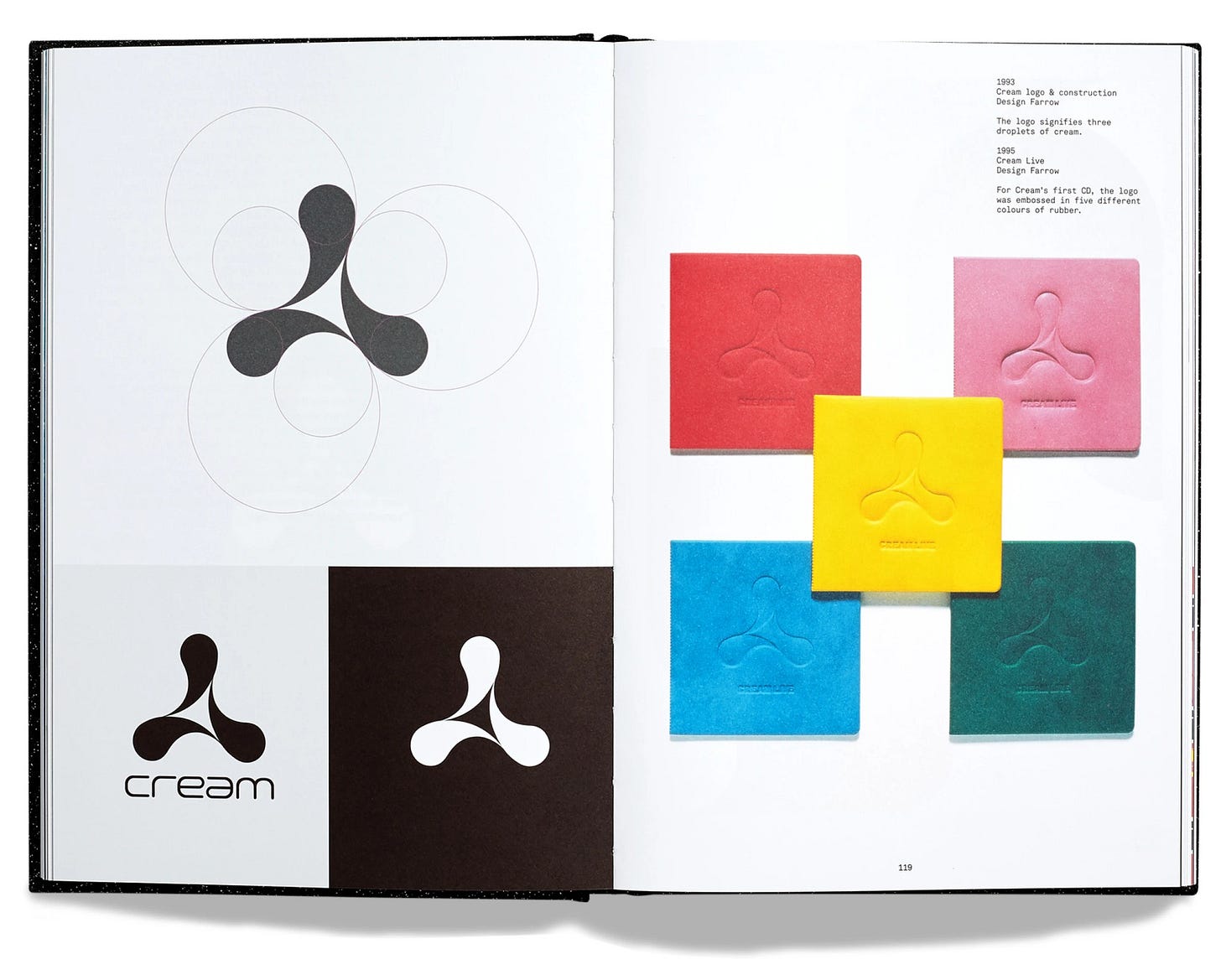
The late Dom Phillips, in his seminal book on the superstar DJ era (think the “supermodel” era with its fixations on a select few individuals, suggested the party rose and then fell alongside the greed of club promoters and the like that cascaded with the paranoia of the time. In 2022, Phillips was tragically killed in the Amazon while working on a book helping to stop deforestation and the Amazon’s destruction, which is slated for launch this year. He was eulogized beautifully by another club historian,
on his Substack.Phillips wrote:
“The music was poppier than ever: intense, vocal trance records. The fashions were more outlandish than ever – the cyber kids in their sci-fi fancy dress, the Mitsubishi name and logo daubed all over the bodies, even tattooed. Not everybody was enamoured. The doubters were already making noise. At Muzik magazine, Ben Turner was disillusioned running stories about Gatecrasher and its crowd. This was a long way from his beloved techno. ‘All this fabulous Detroit-inspired music that we’d been championing for many years became irrelevant. It just all became mainstream,’ he said. ‘People who went to superclubs were the wrong people.’ The cyber kids were dividing clubland. Even Gatecrasher fans such as Miranda Cook [Sam note: read her 1999 Mixmag piece pls] started backing off. ‘The logo, that was embarrassing. When that cyber fashion, to paint your face with drug logos, spread about the country, a lot of people thought, “This isn’t cool.”
The Nu Wave, cont.
For contemporary artists such as Merely (Fave cuts: “I have so many it’s impossible to choose just two”), aka Sweden’s Kristina Florell, who records for the Year0001 label and was previously on the influential Sincerely Yours imprint, Trance remains a touchstone even though it was “kind of niche and often unnoticed or rejected as lowbrow and unsophisticated.” She maintains a ~300-song playlist with over 1000 followers of her inspirations.
“When I was a young teenager in the early 2000’s I was so intrigued by how moved I became by the euro dance hits like “Heaven” by DJ Sammy, the Above & Beyond remix of Madonna’s “What It Feels Like For A Girl” and “Désenchantée” by Kate Ryan. When other kids just seemed to enjoy the music for the party I was just like sobbing in a state of beautiful melancholia. I think that was the starting point, but it wasn’t really until around 2012 I started to dig into the genre. And I got obsessed to feel that again. I went deep into the - back ten - contemporary euphoric, melodic and chill trance, especially the vocal tracks…
Her most recent project is Essential Mixtape, with French producer Malibu (Herb 82), and describes it as “slowed-down trance swept in layers of dust.”
I also Malibu (Fave Trance cuts: Push—“Strange World” and Salt Tank’s “Eugina (Sargasso Sea Mix)”), who said, “Most of my songs share similar aspects of trance's breakdowns, probably because that's music I love listening to.” When I asked if Trance was “back,” she said: “The essence, the soul of it, cannot be replicated ; it is a product of its own time. it can be honoured though, it can be given justice. and it can totally be played forever.”
“i first (consciously) heard about trance when i was 18, my first love was obsessed with it. it was the days of tumblr, vaporwave. a golden age. i remember being quite literally entranced by the melodies, the huge lush pads, the *space*, the vocals, the obvious dissonent vinyl rips on youtube. it was thrilling discovering this music back then, that i then rediscovered later on, in 2016 and dove way deeper into digging into it and understading all the various sub-genres and genres that emerged from it as well…
Across continents, top tier Twitter poster GRRL aka US-based producer James Mapley-Brittle (fave trance cut: “Xpander” again, but also put me on to this one) found Trance by “being a kid and discovering artists like Sasha, Tiesto, Basshunter, and Cascada through video games like Wipeout, DT Racer, and Need For Speed, as well as exploring random music blogs and file sharing sites, etc. Windows XP-era for sure.” On a revival, they think, “Trends come and go in waves, but I think the bright, emotive, and melodic essence of Trance never really left. You can still hear its influence everywhere.” The collaborative EPs with Nick Sanborn’s (Sylvan Esso) Made Of Oak alias give me that po-mo sandblasted Trance feel too. In full Herb connection, the art for the EPs by the great Eric Timothy Carlson features fonts by
’s Public Type foundry. All is well.Trance Music and big BPMs mean Recession
In 2024, talk of the new Recession Pop, echoing the electronic-enhanced party pop of the ‘great recession,’ started to emerge, which had already been clocked by dance music heads of a pulse-quickening across dancefloors. Indeed, one of the reasons Trance’s value has risen is that BPMs have also. Even Progressive-friendly DJs like Sasha and Darren Emerson remarked (see clip below) on how GD fast these songs were in retrospect, but strangely feel ok now. Is Isaac Muk’s 2023 Mixmag piece Harder, better, faster, stronger: Has dance music got harder and faster? there’s a suggestion that post-pandemic, there’s less room to be cool and aloof.
“Perhaps it’s within the zeitgeist of enjoying music that has very much been attributed to the working class,” she says. “Perhaps before when people were more financially stable, people had an air of wanting to listen to a particular type of music because they thought it was genuine, or interesting or cool….But in a post-lockdown era of unaffordable rent, skyrocketing energy bills and a generation of young people whose economic prospects look bleaker than their predecessors – the futility of chin stroking is perhaps more evident than ever.”
In response to the House-ifying of Pop i.e. Beyoncé’s 2022 Renaissance album, a Redditor wrote:
“Back in the 2008 recession, there was a surge in house music production with many pop songs heading toward faster BPMs. This tempo acceleration is actually decently documented showing that during times of economic hardship, the average BPM of popular music tends to increase….Now, it would seem we are headed in a similar direction given the disco-heavy influences of a ton of current pop music. Think Dua Lipa, The Weeknd, and Doja Cat….What do y'all think?”
Across streams into the visual, cultural critic and consultant
who writes the esteemed , and was co-founder of K-HOLE (who coined “normcore” etc) recently picked up on a potentially related trend with his boom boom aesthetic piece, which posits that after a long period of a faux humility or goal for a clean work-life balance and modesty, that new “aesthetics yearn for a reinstitution of boundaries between work and play.” As billionaire culture is now truly mainstream, and strangely lacking in sex appeal, this has made a Silicon Valley idea of excess a seemingly banal affair, and we may get back to more pronounced ‘80s arch maximalism: “There’s blowing up—and then there is blowing out. Like all nouveau riche before them, the cryptorich took the aesthetics of the 2010s to their logical conclusion.” All of this befits Trance aesthetics I think, especially as we’ve dipped deeply into Y2K already.Trance University
Digging into the scholarship side, Arjan Rietveld, founder of the esteemed Dutch label Field Records (fave trance cut: Salt Tank - “Eugina” again, but the Reactivation Mix) also Alibi’s “Eternity”) recently literally wrote the book on Trance, Hypnotised: A Journey Through Trance Music 1990-2005, and has released related compilations on the history of Belgian, Dutch, German, and UK Trance (with an American one on the way I think) found Trance around 2002, “when I came across live footage of DJ Tiësto on Dutch public television. He played at an event called Dutch Dimension that same year, and I was immediately drawn in by the energy and euphoria of his sound. The music seemed to make people so happy. I was instantly hooked. That ‘high’ didn’t last forever, but that era was undoubtedly special.”
He continues:
“The state of the world today is pretty dark. Think of larger-than-life threats such as climate change, geopolitics and wars, as well as issues that impact our lives daily - think digitalisation, isolation and financial stress. It makes for a need of more positive energy in everyday life - to be able to really feel. Trance fills that need. It can provoke these heavy emotional states like no another genre - on dance floors, but also when listening at home or on the road. It’s the perfect soundtrack to let go, to dream away and to reach a more positive mental state. And by doing so, trance counterbalances the omnipresent darkness of more experimental styles of club music.”
Journalist Joe Muggs (Fave Trancer: Evolution - “The Experience Of Taking A Step Into Someone's Dream” found the wave earlier in its history and has written a fair bit about it, including the ravier end:
“I watched it from the start, began my raving career in earnest in 1992 in Brighton, which naturally was trance ground zero in the UK. Among the first clubs I went to as a regular were things like Energized which was run by godless, lawless, six-pills-and-speed-and-acid-at-teatime crusties and was a proper sweat-pit, playing 140bpm+ hard trance monstrosities... but at the same time I was very into the "trance trousers" era of Weatherall, David Holmes, Kris Needs and co, which was just a little less feral, if no less narcotic.
One of my most vivid memories of the time is when the deeply predatory Jesus Army send its operatives clad in camouflage with giant UV crosses round their necks to dance like maniacs, so when a drug-damaged, vulnerable raver asked them "what are YOU on?" they could answer "the spirit of the LORD, my friend" and try and recruit them….I never really liked it in the club post about 93, though. I hate the Fascistic dictatorial build-drop-build-drop thing, after a while you just think, can we please just have the groove? Pop trance was another matter though, something like “9pm Til I Come” or whatever on the radio is a vibe.”
Indeed, Pop Trance may be where the most lasting impact Stateside has been with cuts like “Sandstorm” taking the mantle of the 90’s Jock Jam (a Euro/Hi-NRG ‘90s tradition) with the most alpha dog placement in all of sports, the South Carolina Gamecocks’ signature tune. The Vice mini-doc on “Sandstorm” is amazing (as are the Eiffel 65 and Zombie Nation ones), I felt my brain smooth even further when it comes to light that the song name is just a preset on the X-tremely Y2K Roland JP-8080.
Muggs also touts the Kelly Lee Owens album as a great contemporary staple for the new Trance sound, stating that the songs “sparkle, they swoosh, they glide, they provide a roller coaster ride, and their melodies and lyrics reach deep down to some very basic emotional spots. Owens has tapped into and amplified its beating heart here. There’s Celtic romanticism, there’s nostalgia for the optimism of ‘90s party culture.”
So we beat on, boats against the rave current, wasps in a jar (the sounds of Trance synths duh), we’ll see where this current wave takes us, but it’s heartening to know that we’re already pulling aces.
Enjoy the 20ish hours of Trance adjacency served, and make sure to hit these two:
“Supertiel” by Reinhard Voigt, Kompakt label co-founder with Michael Mayer (Herb 67) and, yes, the less famous brother of Wolfgang, is one of the finest pieces of Techno of that or any decade. The song is a hissing, spitting thing, a machine unmaking itself. It reminds me of that queasy Nine Inch Nails video clip for “Pinion” or a closed-loop apocalypse. Tiësto even included it in one of his CD mixes.
The other is, of course, the heavenly, the clement,“Xpander” from our protagonist, Sasha. The cut similarly works in that it bears no fingerprints and no hand of the artist; it’s an evolving puzzle or contains, my friend Kevin McHugh would say (although he was referring to another song), “A Wrestlemania of Hooks.” And what kind of twinkly heaven could this be? Produced with Charlie May (prog legends Spooky) with a sleeve designed by the inimitable Farrow Design it never is entirely done peaking, just wave after wave of beautifully mixed synths akin to a Philippe Zdar mixdown byProdigy go-to, Neil McLellan, congealing into an ecstatic romance that cannot last.
Bonus Beats:
New on Ghostly, (co-producer of the aforementioned Oklou album) drops an expanded version of his 2024 album with some ace minimal Tr*nce moments, he wrote about it here.
If you need to take it further, there’s a Ghostly-curated Trance playlist
One for the road from the late Marino Stephano. Best youtube comment: “Listen at 7:53 and 8:51 I have been a clubber since the 2nd summer of love in 87 and there is no choon to match the buzz I get off this track at these points. I have the choon at home and listen to it on You tube every week. It is timeless.”






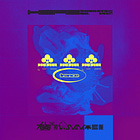

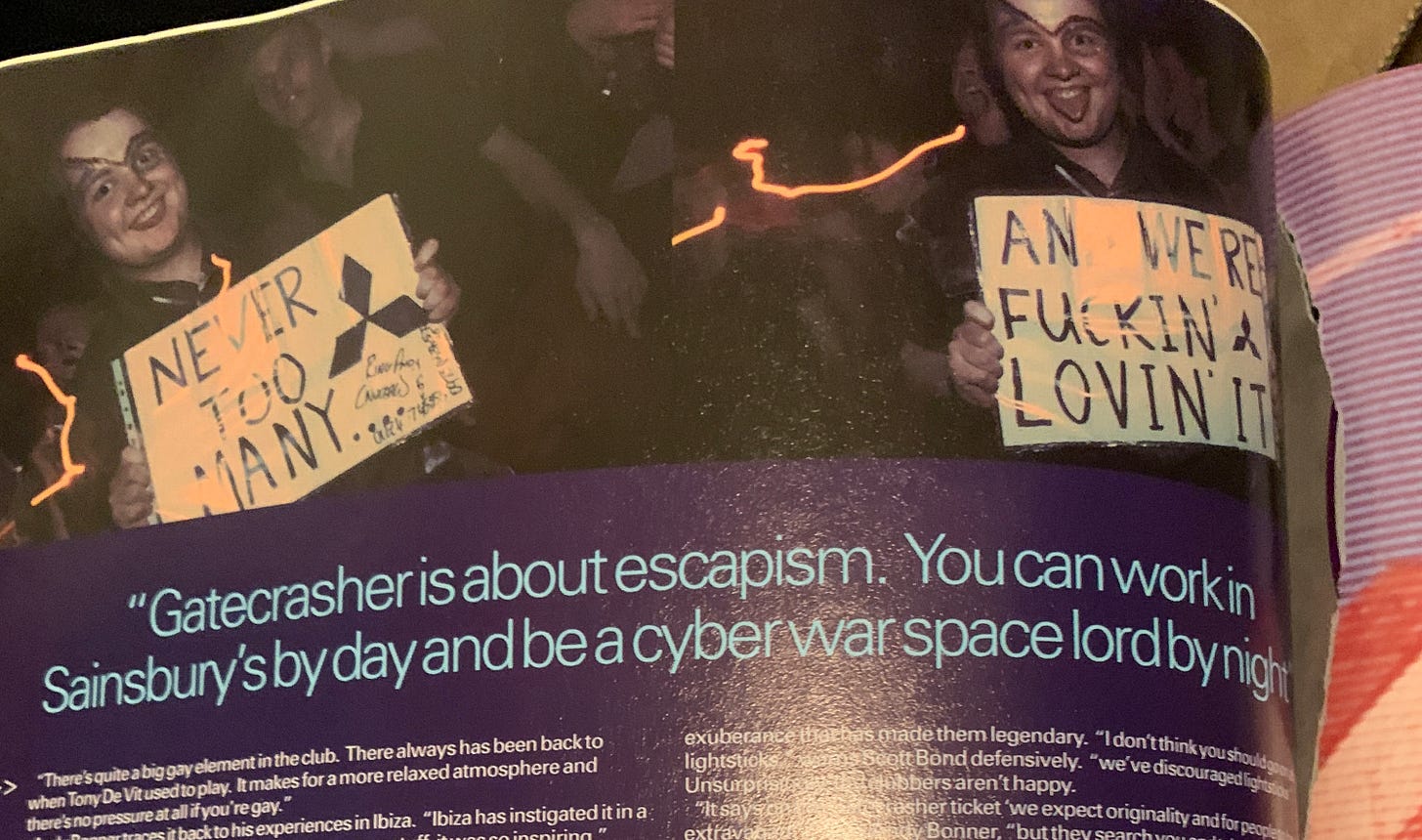




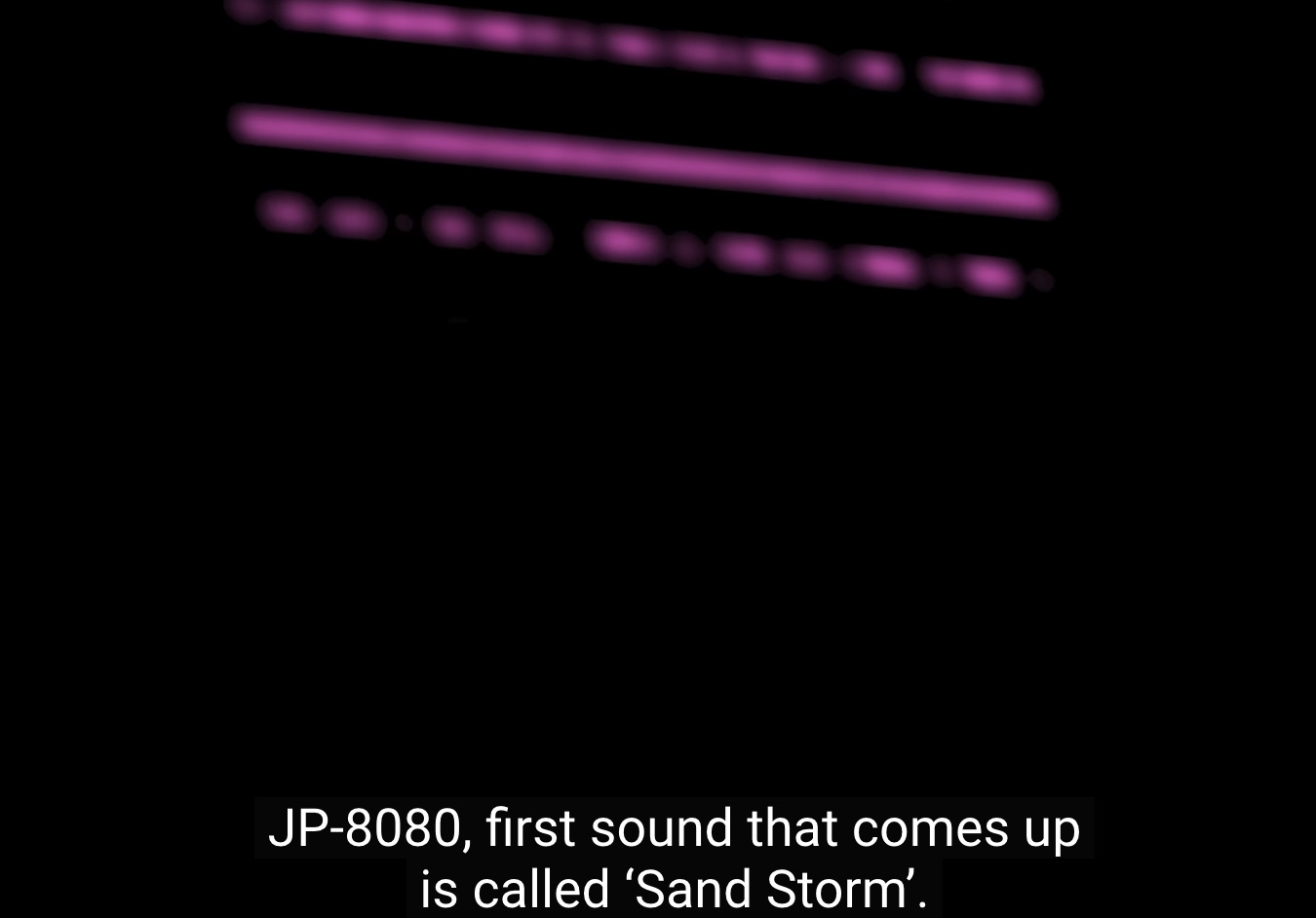
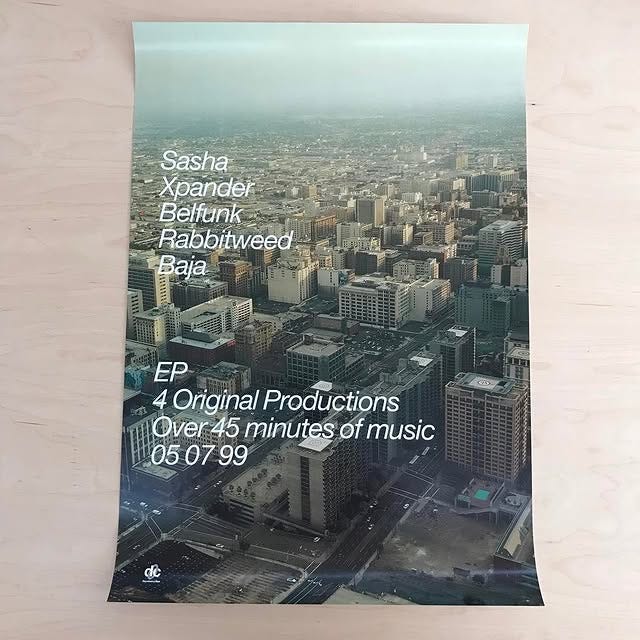

Always enjoyed, never commented. But compelled to today as this playlist has blown up so many emotions. 20+ year old tracks I loved deeply at the time, mixed with recent tracks I have rinsed to death. I have never drawn the line between to two camps and what spoke to me then as a late teen and today as a mid 40s man still using music to escape. Thank you.